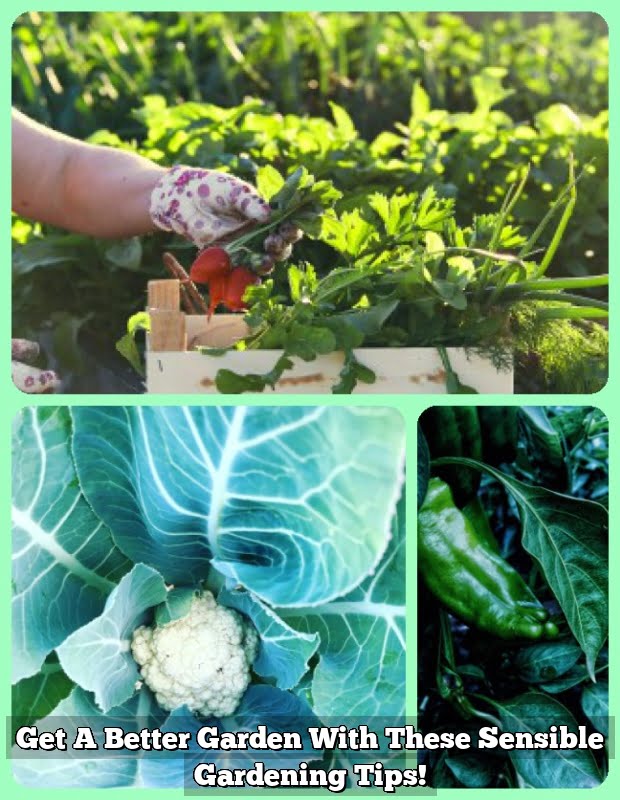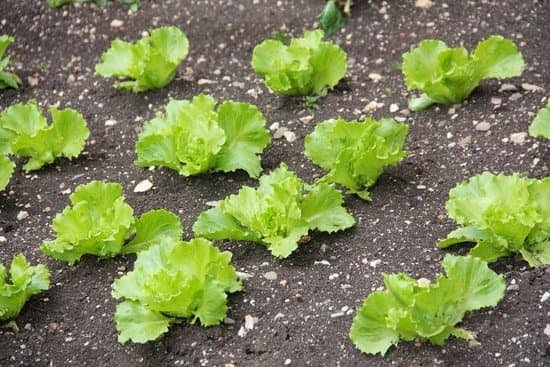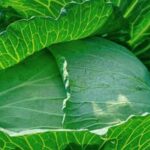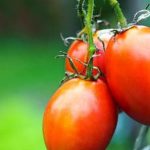Vegetable gardening in Zone 8B offers a unique set of challenges and opportunities, making it essential to have the right knowledge and strategies for success. In this article, we will explore 8B tips specifically tailored to help you maximize your vegetable garden in this climate. From selecting the perfect vegetables to extending your growing season, these tips will ensure a fruitful harvest.
One of the key factors in successful vegetable gardening in Zone 8B is choosing the right vegetables that thrive in this specific climate. Understanding which plants are best suited for the region’s conditions, such as temperature fluctuations and soil quality, is crucial for a productive garden. By selecting appropriate varieties, you can increase your chances of a bountiful harvest while minimizing potential setbacks.
Preparing the soil is another essential step in setting up your vegetable garden in Zone 8B. Proper soil preparation ensures that your plants have access to essential nutrients and water retention capacity. By following best practices for soil amendment and maintenance, you can create an optimal growing environment for your vegetables. Stay tuned as we delve deeper into more tips and techniques to help you achieve a thriving vegetable garden in Zone 8B.
Choosing the Right Vegetables for Zone 8B Climate
When it comes to vegetable gardening in Zone 8B, choosing the right vegetables is crucial for a successful and bountiful harvest. The climate in Zone 8B can vary, with mild winters and hot summers, making it ideal for a wide variety of vegetables. However, some vegetables thrive better in this climate than others. It is essential to select vegetables that are well-suited to the specific conditions of Zone 8B to ensure optimal growth and production.
Warm-Season Vegetables
In Zone 8B, warm-season vegetables are the stars of the show during the hot summer months. These include tomatoes, peppers, eggplant, cucumbers, squash, okra, and beans. These vegetables require plenty of sunlight and warm temperatures to thrive, making them perfect for the long summers in Zone 8B. Be sure to plant these varieties after the last frost date in your area to ensure they have enough time to mature before cooler weather sets in.
Cool-Season Vegetables
While summers may be hot in Zone 8B, cooler temperatures during the fall and winter months create an excellent opportunity to grow cool-season vegetables. Some popular options include lettuce, spinach, broccoli, Brussels sprouts, carrots, radishes, and peas. These vegetables prefer milder temperatures and can tolerate light frosts. Planting them in late summer or early fall will give you a bountiful harvest throughout the cooler months.
Perennial Vegetables
For gardeners looking to maximize their harvest year after year without replanting annually, perennial vegetables are an excellent choice for Zone 8B. Asparagus and artichokes are two examples of perennial vegetables that do well in this climate. Consider incorporating these low-maintenance crops into your vegetable garden for long-term success. Remember that while perennials may require more initial effort to establish, they can provide a reliable harvest for years to come in your Zone 8B vegetable garden.
Preparing the Soil for Vegetable Gardening in Zone 8B
When preparing the soil for vegetable gardening in Zone 8B, it is crucial to ensure that the soil is rich in nutrients and has good drainage. One essential step is to conduct a soil test to determine its pH level and nutrient content.
Based on the results of the soil test, you can then amend the soil as needed by adding organic matter such as compost, well-rotted manure, or other suitable fertilizers. This will help provide a healthy foundation for your vegetables to grow and thrive.
In addition to adding organic matter, proper tilling and aerating of the soil are also important steps in preparing for vegetable gardening in Zone 8B. This helps improve soil structure, allowing for better root development and water penetration. Avoid working on wet soil to prevent compaction, which can hinder plant growth. Consider using raised beds if your soil has drainage issues or is poor in quality, as they allow for better control over soil composition and moisture levels.
Furthermore, mulching is an effective technique to maintain soil moisture, suppress weeds, and regulate temperature in a vegetable garden in Zone 8B. Organic mulches such as straw, leaves, or grass clippings can be applied around plants to help retain moisture during dry periods and reduce the need for frequent watering. Mulching also adds organic matter back into the soil as it decomposes over time.
| Soil Preparation Tips | Zone 8B Vegetable Gardening |
|---|---|
| Conduct a soil test to determine pH level and nutrient content | Add organic matter like compost or manure |
| Till and aerate the soil for better root development | Avoid working on wet soil to prevent compaction |
| Consider using raised beds for better control over soil quality | Apply organic mulch to retain moisture and suppress weeds |
Seasonal Planting Guide for Zone 8B
Zone 8B offers gardeners a long growing season with mild winters and hot summers, making it ideal for a wide variety of vegetables. When planning your seasonal planting in Zone 8B, it is important to consider the specific climate and conditions of this region to ensure a successful harvest throughout the year.
Spring Planting
In Zone 8B, spring is an excellent time to start planting cool-season crops such as lettuce, spinach, peas, broccoli, and carrots. These vegetables thrive in the mild temperatures before the heat of summer sets in. It is important to plant these crops early in the season to allow them enough time to mature before the warmer weather arrives.
Summer Planting
As the temperatures rise in Zone 8B during the summer months, it’s essential to choose heat-tolerant vegetables for your garden. Consider planting tomatoes, peppers, squash, cucumbers, and okra during this time. These vegetables will benefit from the long hours of sunlight and warm temperatures that summer brings.
Fall Planting
In Zone 8B, fall offers another opportunity for gardening as cooler temperatures return. Fall is an excellent time to plant crops such as greens (kale, Swiss chard), root vegetables (radishes, turnips), and herbs (cilantro, parsley). These plants will thrive in the mild weather of fall and can often withstand light frosts.
By following this seasonal planting guide for Zone 8B vegetable gardening, you can maximize your harvest throughout the year. Remember to consider the specific climate and conditions of your region when selecting which vegetables to plant each season. With proper planning and care, you can enjoy a bountiful harvest from your Zone 8B vegetable garden all year round.
Watering and Irrigation Tips for Zone 8B Vegetable Garden
When it comes to successful vegetable gardening in Zone 8B, proper watering and irrigation techniques play a crucial role in the health and productivity of your plants. Here are some essential tips to ensure your vegetable garden thrives:
- Establish a watering schedule: It is important to establish a consistent watering schedule for your vegetable garden in Zone 8B. Typically, vegetables require about 1-2 inches of water per week, either from rain or manual irrigation. Monitor weather conditions and adjust your watering schedule accordingly.
- Use mulch to retain moisture: Applying a layer of mulch around your vegetable plants can help retain soil moisture, reduce evaporation, and prevent weed growth. Organic mulches such as straw, wood chips, or compost can also improve soil structure over time.
- Water deeply and at the base of plants: When watering your vegetable garden in Zone 8B, it is best to water deeply at the base of the plants rather than overhead. This encourages strong root growth and reduces the risk of fungal diseases caused by wet foliage. Consider using drip irrigation or soaker hoses for more efficient watering.
In addition to regular watering, proper irrigation practices are essential for maintaining a healthy vegetable garden in Zone 8B:
- Check soil moisture regularly: To avoid overwatering or underwatering your plants, regularly check the moisture level of the soil. Stick your finger into the soil up to a few inches deep – if it feels dry, it’s time to water. If it feels moist, hold off on watering for another day or two.
- Consider using a rain gauge: Monitoring rainfall levels with a rain gauge can help you determine whether additional irrigation is necessary for your vegetable garden in Zone 8B. Be sure to adjust your watering schedule based on natural precipitation.
- Water in the morning: Watering your vegetable garden in the early morning allows plants to absorb moisture before the heat of the day evaporates it. This helps prevent water stress and promotes healthier growth throughout the growing season.
By following these watering and irrigation tips for Zone 8B vegetable gardening, you can ensure that your plants receive adequate hydration and thrive throughout the season. Properly managing water levels not only supports plant health but also contributes to higher yields and overall garden success.
Pest and Disease Management in Zone 8B Vegetable Gardening
When it comes to maintaining a healthy vegetable garden in Zone 8B, pest and disease management play a crucial role. One of the key tips for effectively handling pests and diseases is to practice crop rotation. Rotating your crops each season can help prevent the build-up of specific pests and diseases that may target certain vegetables. This simple yet effective technique can make a big difference in the overall health of your garden.
Another important aspect of pest and disease management in Zone 8B vegetable gardening is to keep a close eye on your plants regularly. By inspecting them frequently, you can identify any signs of pest infestations or diseases early on. Look out for yellowing leaves, spots, holes, or any other abnormalities that may indicate a problem. Prompt action such as removing infected plants or treating with organic remedies can help prevent the spread of pests and diseases throughout your garden.
Additionally, implementing companion planting in your Zone 8B vegetable garden can also aid in pest control. Certain plant pairings can naturally repel pests or attract beneficial insects that prey on harmful ones. For example, planting basil near tomatoes can help deter tomato hornworms, while marigolds are known to repel nematodes. By strategically arranging your vegetable crops based on their companion planting properties, you can create a more harmonious and pest-resistant environment for your garden.
| Pest and Disease Management Tip | Benefit |
|---|---|
| Practice crop rotation | Prevents build-up of specific pests and diseases |
| Regularly inspect plants | Early identification and treatment of issues |
| Implement companion planting | Natural pest control through plant pairings |
Harvesting and Storing Vegetables in Zone 8B
When it comes to vegetable gardening in Zone 8B, the joy of harvesting your own fresh produce is unmatched. Proper harvesting techniques and storage practices are essential to ensure that you enjoy the fruits of your labor for as long as possible. Here are some tips to help you make the most of your harvest:
- Harvesting at the Right Time: One of the keys to successful vegetable gardening in Zone 8B is knowing when to harvest your crops. Different vegetables have different indicators that signal they are ready for picking. For example, tomatoes should be harvested when they are fully ripe and red, while leafy greens like lettuce are best picked when young and tender.
- Proper Handling: How you handle your freshly harvested vegetables can impact their quality and shelf life. To minimize damage, gently handle delicate crops like berries and beans, while using a sharp knife or pruners for tougher stems like those of broccoli or cabbage.
- Effective Storing Techniques: Storing your harvested vegetables properly is crucial to maintain their freshness and flavor. Some vegetables, like root crops and winter squash, can be stored in a cool, dark place with proper ventilation. Leafy greens benefit from being wrapped in a damp paper towel before storage in the refrigerator.
By following these tips for harvesting and storing vegetables in Zone 8B, you can enjoy a bountiful supply of homegrown produce throughout the growing season and beyond.
Tips for Extending the Growing Season in Zone 8B Vegetable Garden
In conclusion, maximizing the growing season in your Zone 8B vegetable garden can significantly increase your harvest and overall success. By implementing various techniques such as using row covers, cold frames, or even a simple hoop house, you can protect your crops from late frosts and extend the growing period well into the fall months.
Additionally, interplanting with cold-hardy vegetables and utilizing heat-absorbing materials like black plastic mulch can help maintain soil temperatures and keep your plants thriving longer.
Moreover, paying attention to the weather patterns in your specific area of Zone 8B can also give you an advantage in extending the growing season. Understanding when to expect the first frost in the fall allows you to plan accordingly and make adjustments to protect your crops as needed. Keeping a close eye on the forecast and being proactive in preparing for temperature fluctuations can make a significant difference in how long you can enjoy fresh produce from your garden.
By following these tips for extending the growing season in your Zone 8B vegetable garden, you are not only maximizing your yield but also gaining a deeper understanding of how to work with nature to achieve optimal results. Experimenting with different methods and learning from each season’s successes and challenges will ultimately lead to a more resilient and productive garden.
With dedication, patience, and a willingness to adapt, you can turn your vegetable gardening journey in Zone 8B into a rewarding and fruitful experience.
Frequently Asked Questions
What Vegetables Grow Best in Zone 8b?
In Zone 8b, vegetables that grow best are those that thrive in warm and moderate climates. Some examples include tomatoes, peppers, squash, cucumbers, beans, and various herbs like basil and parsley. These vegetables tend to do well in the longer growing season provided by Zone 8b.
What Is the Difference Between Planting Zone 8a and 8b?
The key difference between planting Zone 8a and 8b lies in the average annual minimum temperature range. Zone 8a has temperatures that can dip slightly lower than Zone 8b, affecting plant selection. Plants suitable for Zone 8a might be more cold-hardy compared to those for Zone 8b.
Can Vegetables Grow in 8 Inches of Soil?
Vegetables can indeed grow in 8 inches of soil with proper care and attention. While deeper soil is ideal for many crops because it provides more room for roots to spread out and access nutrients, shallow soil depth doesn’t necessarily mean you can’t successfully grow vegetables.
It’s important to choose compact varieties of vegetables suited to shallow soil depths and ensure adequate watering and fertilization to support their growth.

If you’re looking to get into vegetable gardening, or are just looking for some tips on how to make your current garden better, then you’ve come to the right place! My name is Ethel and I have been gardening for years. In this blog, I’m going to share with you some of my best tips on how to create a successful vegetable garden.





